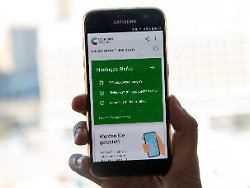Some users of the Corona warning app are surprised that they have had risk encounters, but still received no warning or no increased risk is displayed. In fact, that's not a bug, the app does exactly what it's supposed to. She just doesn't explain it.
Most users of the Corona warning app will probably only open the application occasionally or never. Why should it? In an emergency, you receive a push notification. If you do this anyway, you usually find out that everything is OK because you have not yet had a risk encounter. However, some users see the information that they have a low risk, although risk encounters are displayed. Is the app not working properly again?
On the contrary, such cases show that the RKI application can do exactly what is required of it. It should not always sound the alarm, but only when an encounter has taken place in such a way that there has actually been an increased risk of infection. This is the case when several factors come together: duration and distance. You have to have been near someone for at least ten minutes in the past 14 days who has triggered a warning via the app. If everything does not come together, a risk encounter will not be rated as risky enough for a warning, but will still be displayed in the app.
Even further away can be close
You don't even have to be really close to an infected person to do that. Because the app measures the distance and duration of encounters using the smartphone's Bluetooth function. The time can be measured very precisely, but the distance is only roughly determined using the so-called damping value. This means that the Bluetooth signal weakens with increasing distance, which the app converts into meters. Because this is only very imprecise due to obstacles, for example, encounters up to a distance of up to eight meters are registered.
It is currently very unlikely that you will see the display of risk-free risk encounters yourself. The Corona warning app has been downloaded around 17 million times so far. By August 4, only 1052 codes for verifying positive test results had been sent, which means that that many infected users could have been at most one risk encounter.
.
